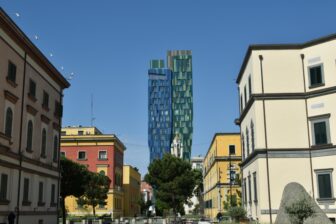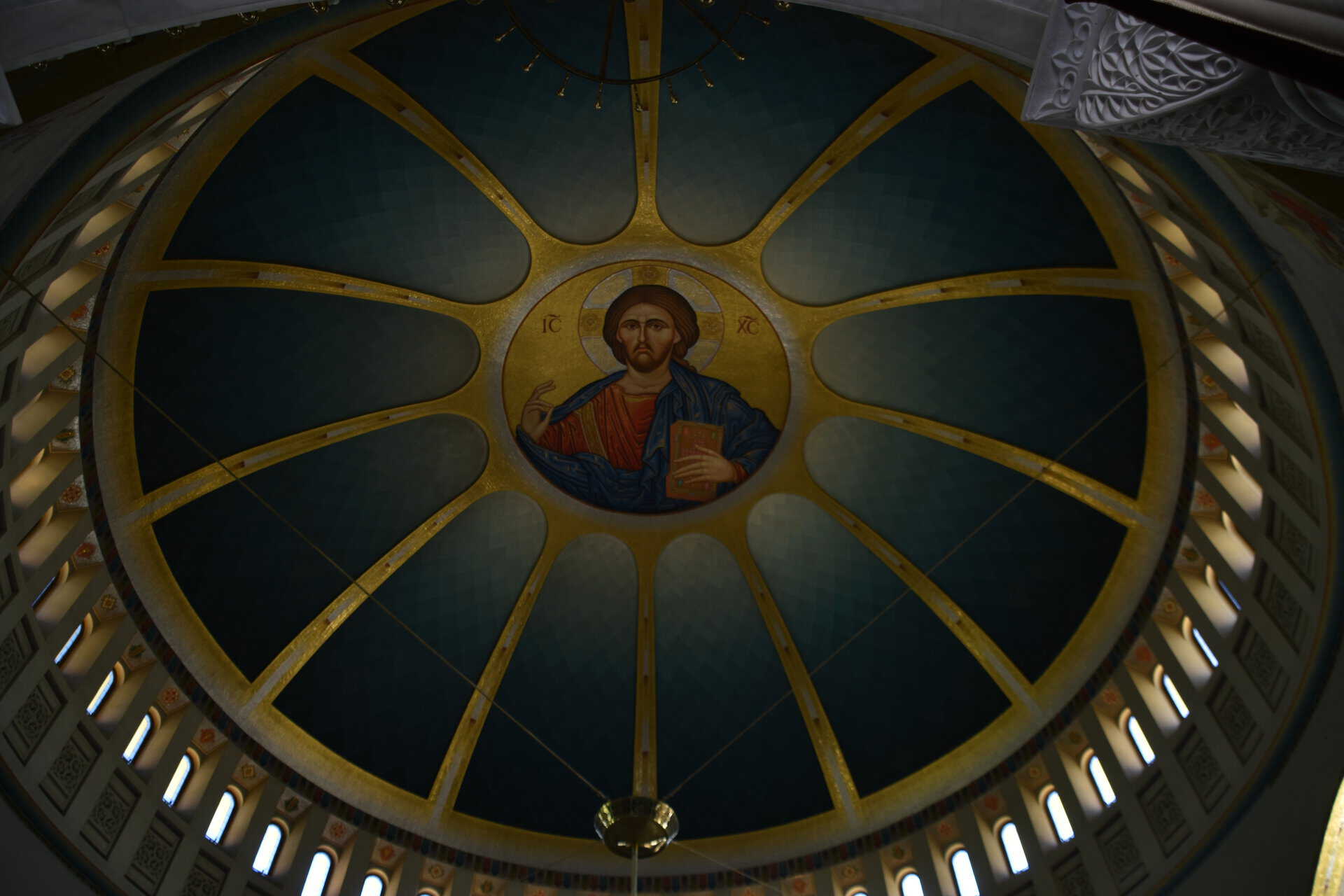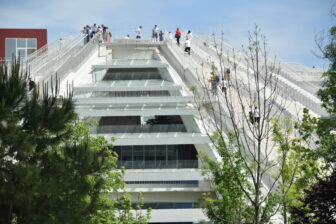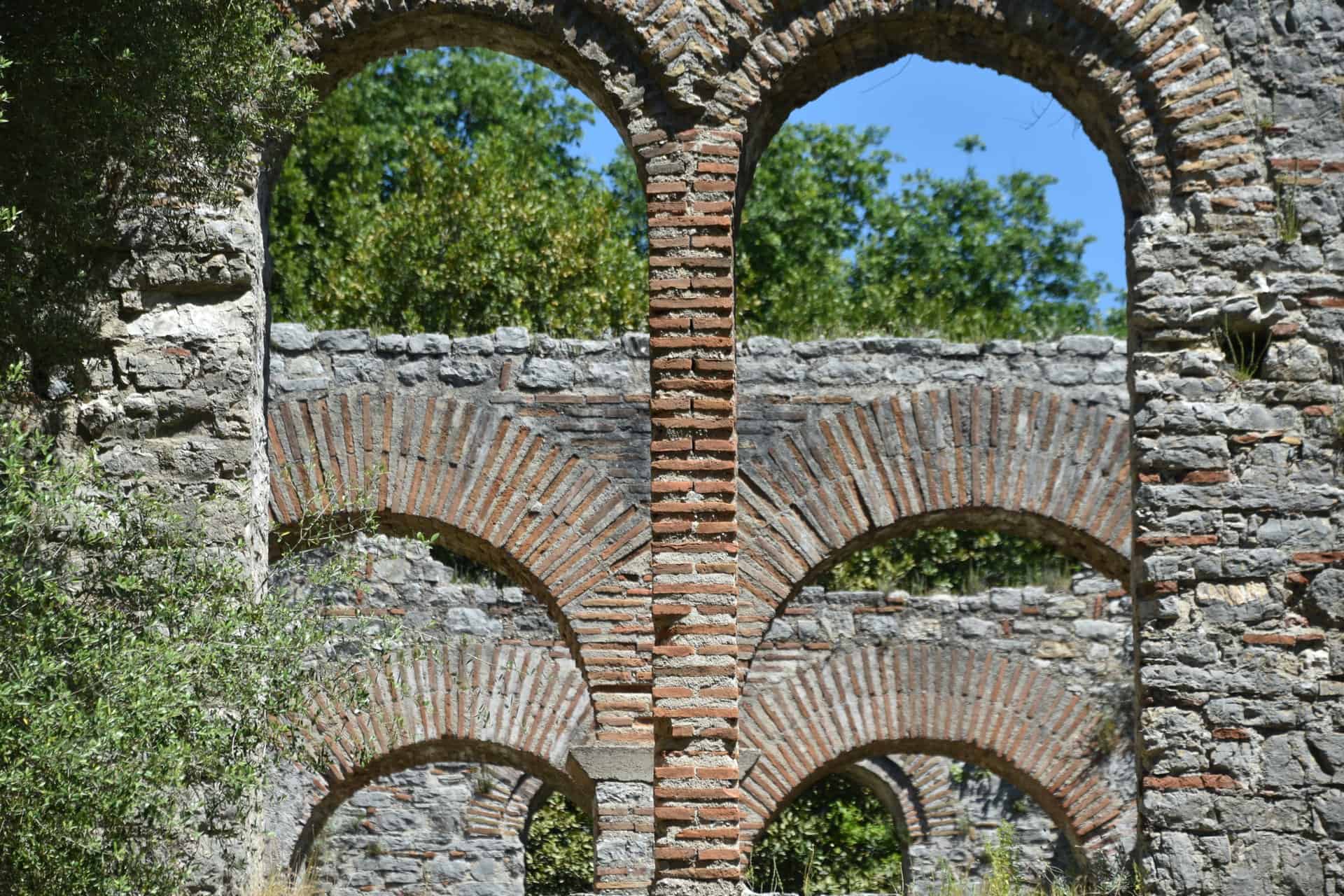
[Apr. 2024] On the second day in Saranda, a seaside town in Albania, our tour took us to see the ruins of Butrint.
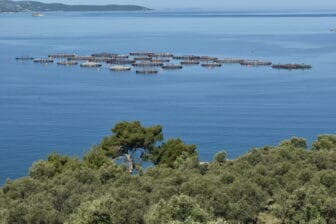
It is located about 18 km south of Saranda.
This area is a national park where the ruins and mussel farming are protected.
It is a 29 square kilometre park where both nature and culture are protected by the country.
There was a photo stop on the way there, so we were able to enjoy the scenery.
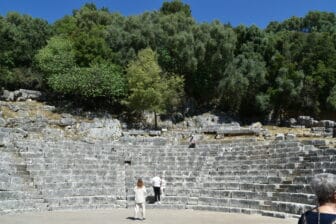
The Butrint ruins are the remains of a commercial city built in the 6th century BC by Greeks who came from the Greek island of Corfu across the sea.
After that, it came under the umbrella of Rome in 167 BC.
During the time of the Eastern Roman Empire, it flourished as a holy place.
After that, it gradually declined and was abandoned until it was discovered in 1927.
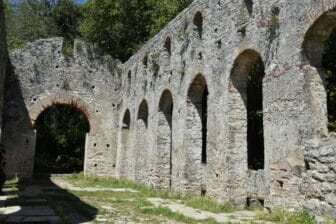
But thanks to that, the Roman theatre and other buildings have remained without being destroyed.
Normally, like the Byllis ruins, the stones from the theatre would be used for construction over the years, but because of the earthquake, they were completely hidden under the rubble.
The Italian Fascist government started excavations and discovered these ruins.
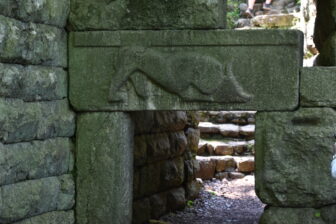
Around the 6th century, the Roman Empire forced Christianity on its people, so everyone had to be baptized, and so baptistries were set up outside the churches, and there were remains of these.
When it was under the control of the Republic of Venice, they found a lion relief that had been abandoned and used it to create a gate, which is now one of the highlights of the ruined city as the Lion Gate.
It’s a picture of a female lion killing a bull.
We looked around a lot, but this is the largest ruin in Albania, and it was one of the highlights for our guide, who is also an archaeologist.
He was so detailed that, to be honest, I got tired.
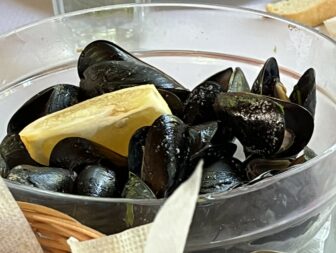
Finally, we finished looking around and it was time for lunch.
We went to a restaurant called Livia, near the ruins.
Livia was the name of the wife of Augustus, the first emperor of the Roman Empire.
Augustus’ name came up often while walking through the ruins.
In addition to salads, this restaurant served mussels, a local specialty, as a starter.
They were delicious.
The main course was grilled fish, which appeared to be sea bass.
It was simple but very good.
The tour program was supposed to end here and we would return to the hotel for free time, but thanks to the guide’s quick thinking, we had a very enjoyable time after this.

